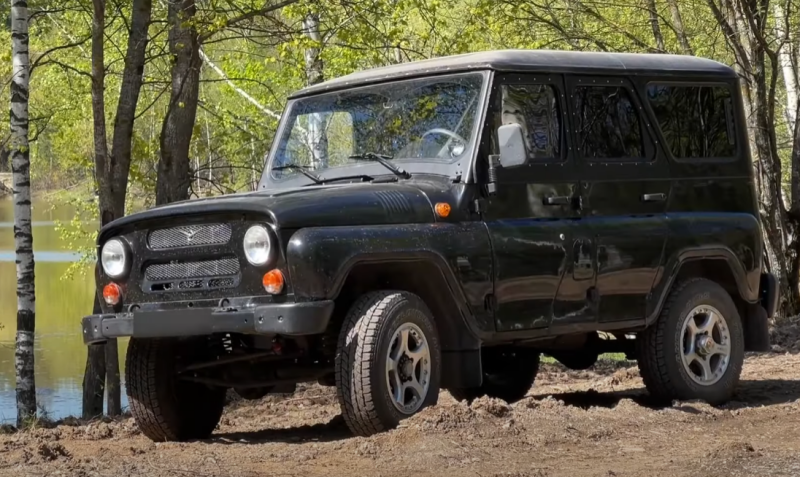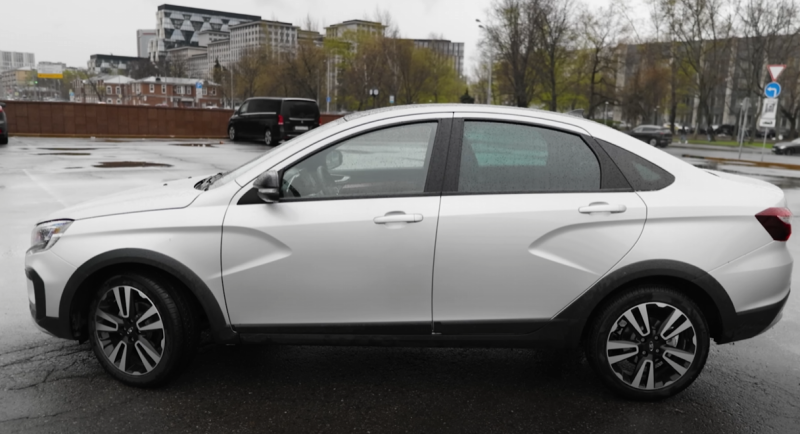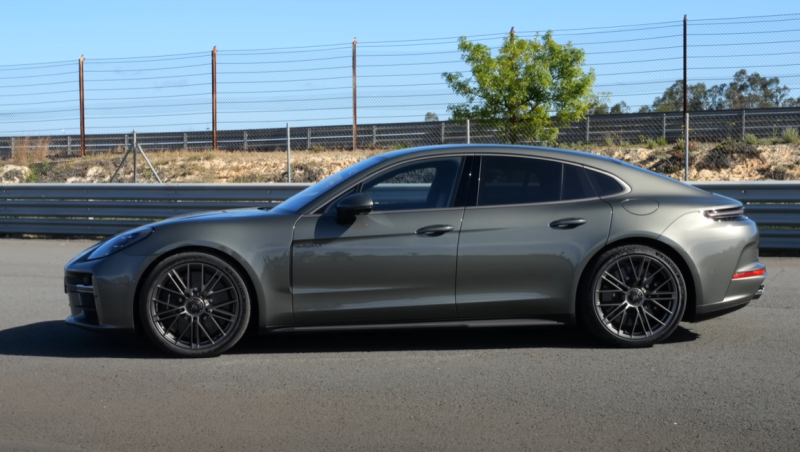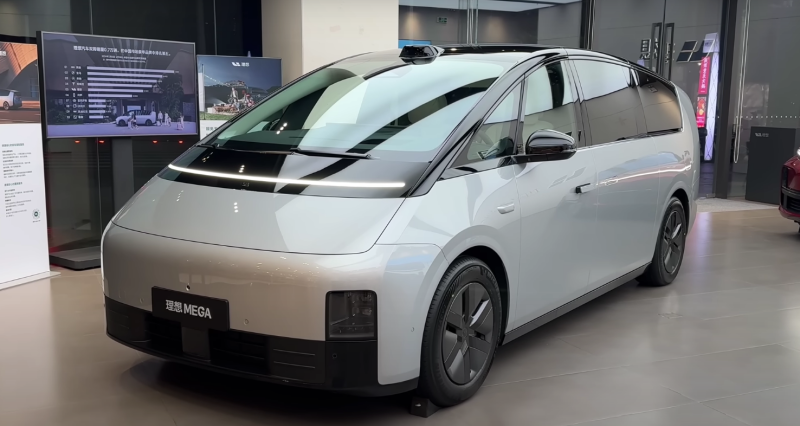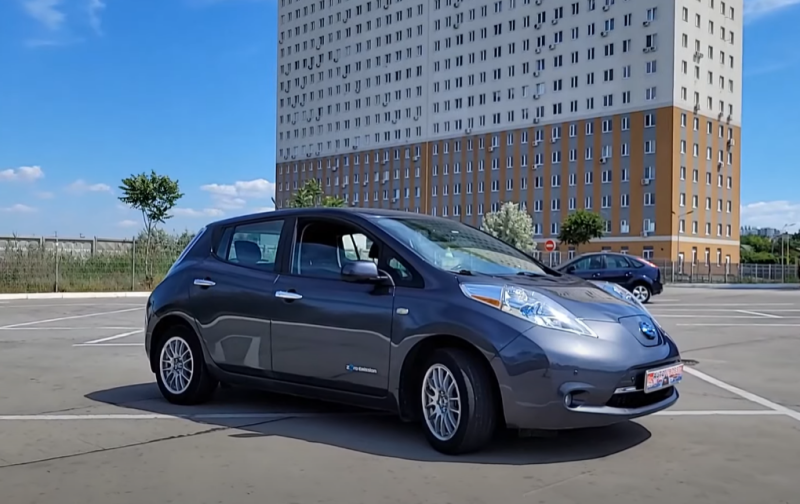When designing a new machine, the designers, for reasons of economy, used parts and components from the Mi-1 with might and main. However, the result was a unique aircraft, not like its predecessor. Although they wrote in the West, the Mi-1 appeared in the USSR with two engines. A pair of gas turbine units guaranteed flight safety and high power.
Structural features
The fuselage was made entirely of metal. The power plant in the form of a pair of GTD-350 was located at the top, on the "boar" (this word has nothing to do with the animal and comes from the French cabane - "house").
 In the USSR, someone affectionately called the helicopter a “donkey”: indeed, there is something ... Photo: YouTube.com
In the USSR, someone affectionately called the helicopter a “donkey”: indeed, there is something ... Photo: YouTube.comA gearbox was placed behind the motors, a fan cooling the lubrication system was placed above the motors. The supporting structure was a main propeller with three blades plus a tail. A stabilizer was installed at the back, the peculiarity of which is that it was controlled “independently”, depending on the pitch of the large propeller. Additional fuel tanks could be fixed on the sides of the car body.
 Outside, fuel tanks needed for long-distance hauls, or tanks for agricultural chemicals, were fixed. Photo: YouTube.com
Outside, fuel tanks needed for long-distance hauls, or tanks for agricultural chemicals, were fixed. Photo: YouTube.comFor the transport option, a winch and an external suspension with a carrying capacity of up to 0,8 tons were provided. The chassis included a pair of main supports on shock absorbers and one front one, with a pair of wheels on a lever suspension. If necessary, skis were installed on the Mi-2.
Cabin
Inside the cabin, two sofas were attached to the floor, designed for six people. Behind was another folding seat. There were other options for arrangement, depending on the purpose of the helicopter.
 Devices remind when the helicopter was developed. Photo: YouTube.com
Devices remind when the helicopter was developed. Photo: YouTube.comThe cabin is designed for two crew members, but in most cases the car was piloted by one pilot. In the training version, all controls are duplicated.
Test
The layout, approved by the commission, was ready a year after the release of the Decree, at the beginning of 1961. A month later, factory tests of the B-2 (that was the name of the helicopter at first) started. It turned out that the screw with three blades did not justify itself and their number was reduced to two. And already on September 22.09.1961, 15, the first prototype took off and circled in the sky for 2 minutes. A month later, the equipment was handed over for state tests. Toward the end of the year, another B-1962 was built. At the beginning of XNUMX, it was also handed over for verification at the state level.
 The machine can be operated in any climatic conditions. Photo: YouTube.com
The machine can be operated in any climatic conditions. Photo: YouTube.comIn May 63, the V-2, which had not yet gone into series, managed to set a speed record for helicopters of this class: 253 km/h at a distance of one hundred kilometers). In the 818th, the achievement was improved to 65, 269 km / h.
However, not everything went so smoothly - cons were revealed. First of all, the power plant was redone: the motors were “pushed apart” for ease of maintenance. As a result, the fuselage had to be redone: the fairing was reduced, the “boar” began to “fall” down more sharply.
 Access to the engine has become easier. Photo: YouTube.com
Access to the engine has become easier. Photo: YouTube.comHorizontal blinds were replaced with a pair of oval openings with protective nets. Structural changes delayed repeated tests. In their course, it turned out that the new car is superior to its predecessor in all operational parameters. In 1964, the helicopter was officially recommended for large-scale production.
Where was the conveyor for the Mi-2
This is where things get interesting. The serial production of helicopters began to be established in the Polish People's Republic (PNR). Production was taken over by the state-owned enterprise Parlstwowe Zaklady Lotnicze (PZL). More precisely, everything happened in the city of Shvidnik, where the concern's branch was located. The transfer of design documents for the new machine was only a continuation of the Soviet-Polish cooperation. And it began in 1954, when the USSR gave Poland the opportunity to assemble the Mi-1. Obviously, this was done in order to help the republic recover after the war.
 Mi-1: aviation cooperation between the two countries began with this helicopter. Photo: YouTube.com
Mi-1: aviation cooperation between the two countries began with this helicopter. Photo: YouTube.comThe NDP received only drawings: Soviet specialists helped to master the technology of large-scale production. For this, Mil and other employees of the Design Bureau were awarded the highest Polish awards, in particular, the Commander's Crosses of the Renaissance.
When signing the treaty, the USSR undertook to regularly provide orders to the NDP for the supply of vehicles. In addition to the Soviet Union, the helicopter was purchased in the countries of the socialist camp, as well as Iraq, Libya, Egypt, and some African states. One agricultural specimen even ended up in the United States in 1978. After resales, the car met in Turkey, Latin America.
The Poles tried to give the car the SM index and its name "Maribu" (a bird that loves carrion). However, all this was not approved and, as a result, they left the Mi-2. In the 67th, the helicopter was demonstrated at the air show in Le Bourget. Moreover, the apparatus did not represent the USSR, but the People's Republic of Poland. The NATO members gave it the name Hoplite, which is how the ancient Hellenes called the infantry.
 Abroad, the Mi-2 was in special demand among the military. Photo: YouTube.com
Abroad, the Mi-2 was in special demand among the military. Photo: YouTube.comAfter the start of large-scale production, the helicopter was the only twin-engine rotorcraft in the world for several years. Only 6 years later, the Bell-212, equipped with a pair of RTbT-3 Twin Ras engines, entered the American conveyor.
Enhancements
In the 70s, adjustments were constantly made to the design of the machine. So in 71, the sliding window near the pilot was replaced with a door, later the helicopter was equipped with fiberglass propellers, new large (600 l) tanks for chemicals were installed on the agricultural version. At the same time, they abandoned steel, which was corroded by reagents. Tanks began to be made of plastic. A number of nodes have been improved.
Modifications
There were quite a lot of them, including the military. Among civilians, the passenger and cargo versions of the Mi-2T and Mi-2P, as well as the "luxury" version for VIPs of the Mi-2P "Salon", were popular. The Mi-2M was distinguished by other engines - the GTD-350P with a capacity of 450 "horses", the Mi-2A had AI-450 turboshaft engines. Other models of the vehicle were also produced: search and rescue (including deck), sanitary, resuscitation, patrol, training, agricultural. There were also highly specialized ones: for example, the Mi-2 with radar equipment was used in Bulgaria to search for contaminated areas of the Black Sea.
 At agricultural work. Photo: YouTube.com
At agricultural work. Photo: YouTube.comAnd that's not counting military modifications! Technical data of the basic version of the Mi-2:
✅ main and tail rotor diameter - 14,5 and 2,7 m
✅ empty weight and maximum takeoff - 2,372 and 3,659 tons
✅ power plant - 2GTD-350, 298 hp each. With.
✅ average and highest speed - 194 and 210 km / h
✅ height - up to 4 km
✅ range - 790 km
Officially, helicopters were produced from 1965 to 1998, but the Poles released the last car made on the basis of the Mi-2 PZL Kania in 2006 (19 units).
Exploitation
Mi-2 is successfully used: it can be found in many countries of the world. To date, there are 38 countries-operators. Unfortunately, there are many officially confirmed facts of air crashes and accidents. From 1969 to 2022, 61 cases were issued. The most recent ones are still under investigation. Today, somewhere the machines are actively used, and somewhere they stand as museum exhibits.
 Upgraded Mi-2 at Helirussia-2018. Handsome! Photo: YouTube.com
Upgraded Mi-2 at Helirussia-2018. Handsome! Photo: YouTube.comFor example, there are 4 pieces in the USA, in the Cold War Museum. Another 13 cars are owned by private collectors, and 3 of them fly. In Russia, three Mi-2s are known to be laid up in Verkhnyaya Pyshma (a museum in the Sverdlovsk region), Kurgan and Novosibirsk.

